If you haven’t yet visited iSimangaliso Wetland Park, you have sure been missing out. The park spans over 280 kilometres along South Africa’s coastline and offers a remarkable diversity of ecosystems and subtropical environments.
It is located on the northern coast of KwaZulu-Natal and stretches from Lake St Lucia to the Mozambican border.
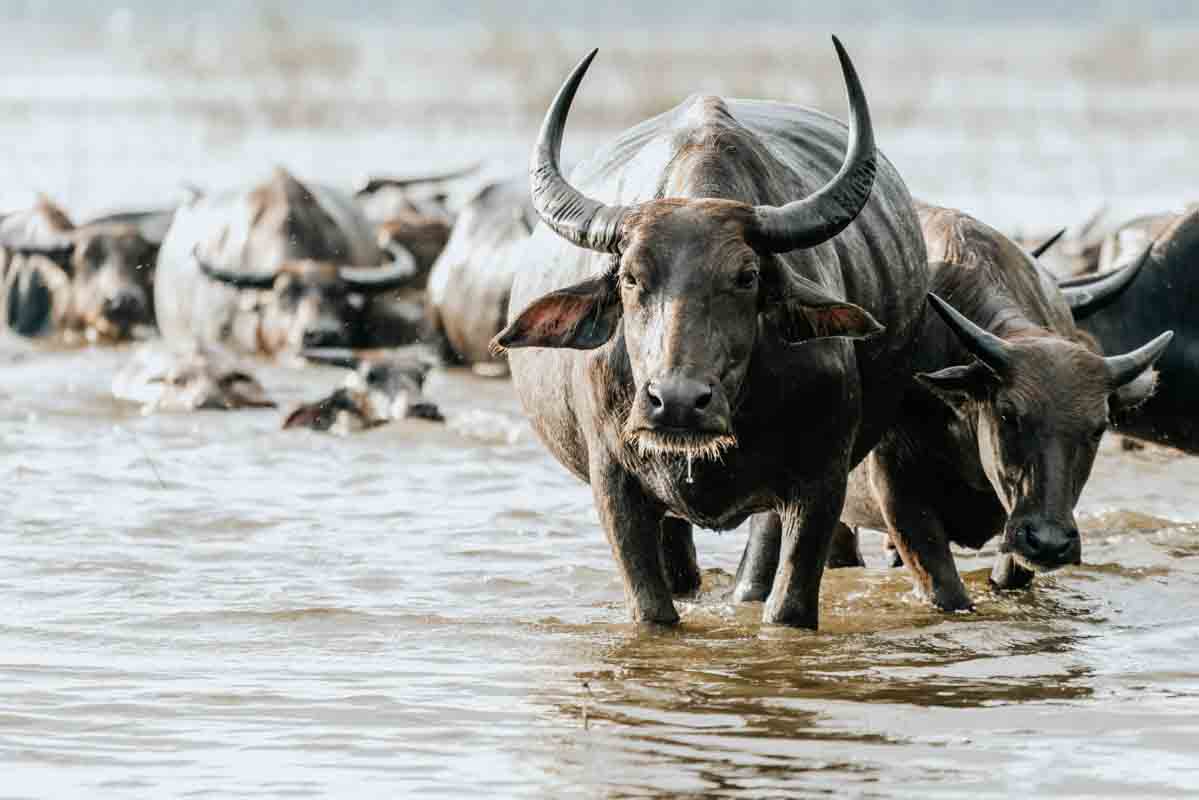
iSimangaliso Wetland Park | Image by Chantelle Flores | www.51countriesandcounting.com
Not only is it South Africa’s second-largest protected area, but it is also South Africa’s first inscribed UNESCO World Heritage site.
Its name, iSimangaliso, refers to “miracle” and “wonder” in Zulu. It aptly describes the astounding diversity found in its 320,000 hectares of untouched landforms.
You can find sub-tropical beaches, clear waters and brightly-coloured coral reefs, as well as coastal dune forests that are 25,000 years old and among the highest in the world.
The park also features three major lake systems that are home to South Africa’s largest population of hippos and crocodiles. In fact, it is one of the only places in the world where you can find hippos, crocodiles and sharks sharing the same waters.
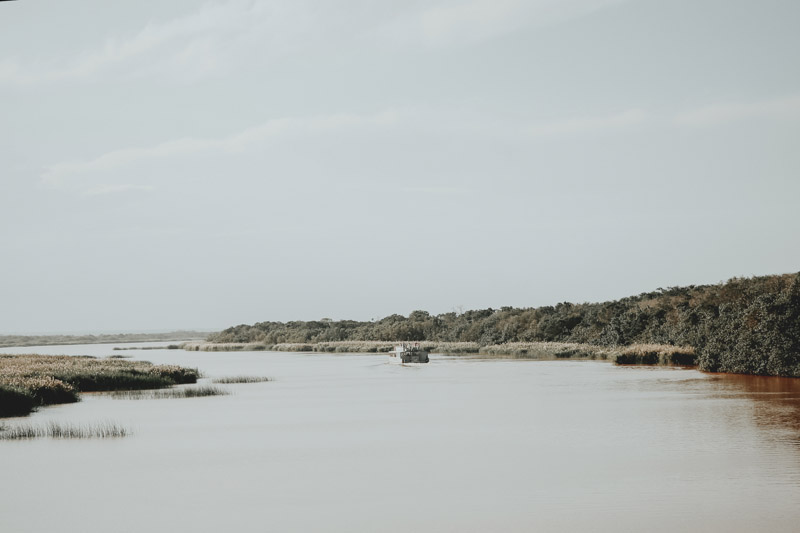
iSimangaliso Wetland Park | Image by Chantelle Flores | www.51countriesandcounting.com
Wildlife
iSimangaliso Wetland Park supports more species of animals than the better-known and much larger Kruger National Park and Okavango Delta.
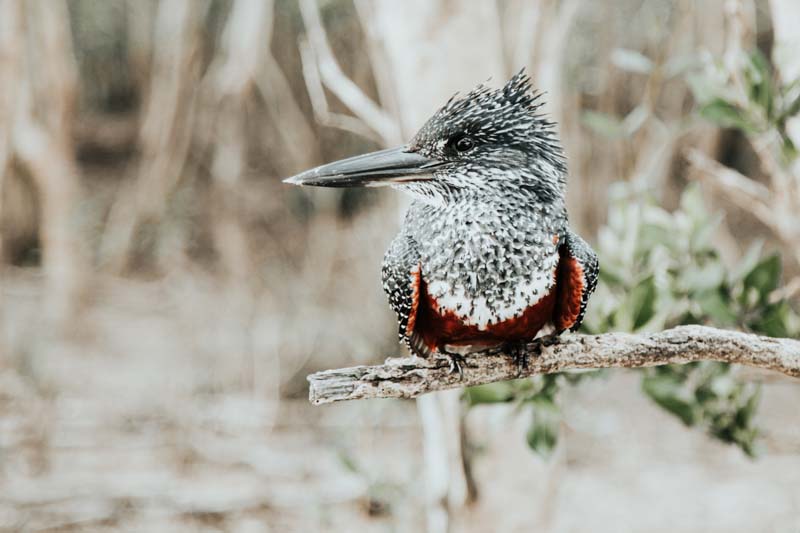
iSimangaliso Wetland Park | Image by Chantelle Flores | www.51countriesandcounting.com
It is one of the best places in the country where you can experience the Big 7: Humpback whales, whale sharks, lions, rhinos, elephants, leopards, and buffalos can all be found here.
It is also home to numerous bird species including 60,000 flamingoes and African fish eagles, as well as rare palm-nut vultures.
In addition, Lake Sibaya is home to KwaZulu-Natal’s second-largest population of hippo and Nile crocodiles.
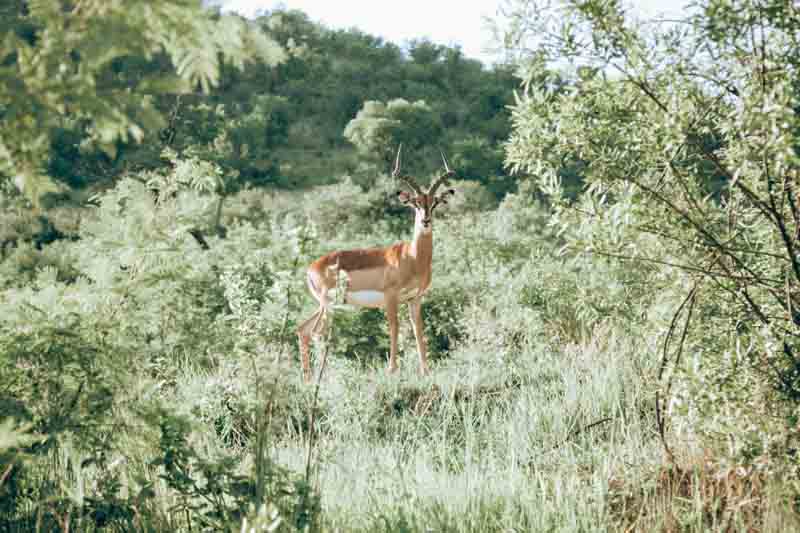
iSimangaliso Wetland Park | Image by Chantelle Flores | www.51countriesandcounting.com
Close encounters with hippos and crocodiles
Having a close encounter with hippos and crocodiles is the main attraction of iSimangaliso Wetland Park. By booking a two-hour boat safari along the St Lucia estuary, you’ll be able to take in all the natural beauty that this area has to offer.
Sightings of hippos and crocodiles are almost guaranteed as the boat usually docks close to a pod of hippopotami, which you can admire without any obstruction, from the boat’s viewing deck.
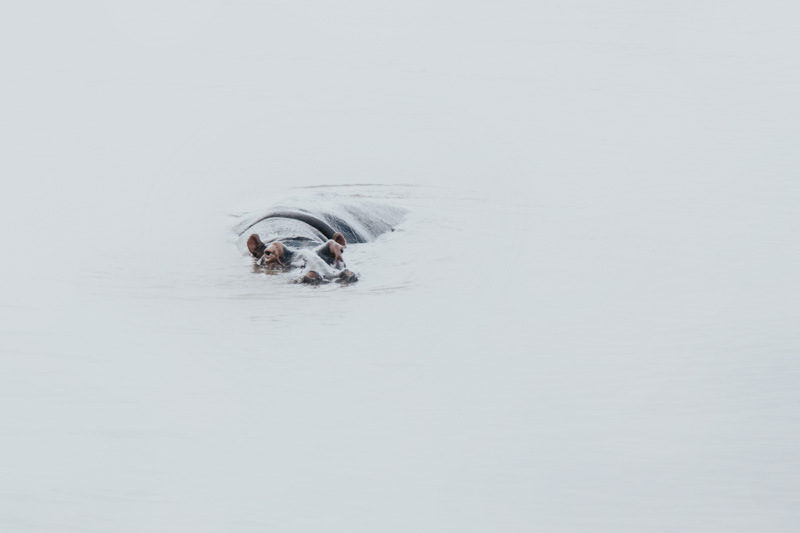
iSimangaliso Wetland Park | Image by Chantelle Flores | www.51countriesandcounting.com
In addition to seeing at least 25 to 30 crocodiles, you will also see many types of birds. This locale is one of the few places in South Africa that boasts sightings of over 500 bird species.
If it’s your lucky day, you may even witness an elephant or two taking a dip, or even a shark gracing these waters.
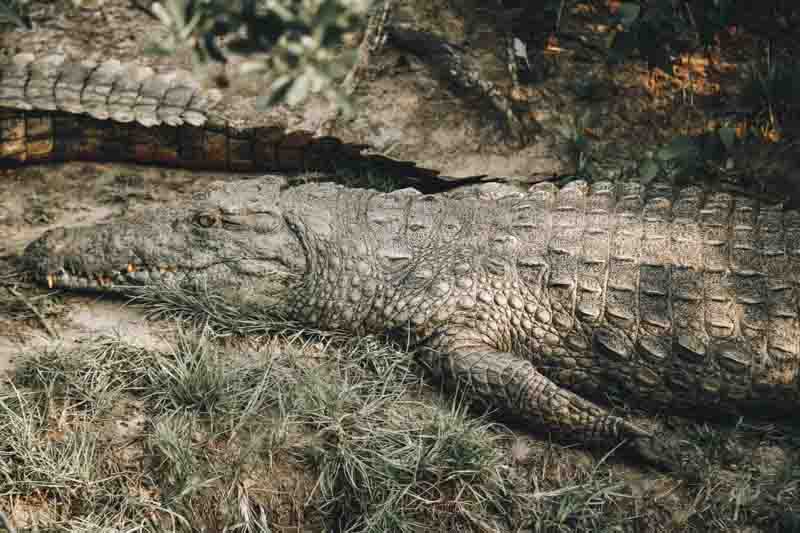
iSimangaliso Wetland Park | Image by Chantelle Flores | www.51countriesandcounting.com
Leatherback and loggerhead turtles
Visit during the months of November to March, when the coastline becomes a breeding ground for iSimangaliso’s oldest residents – the leatherback and loggerhead turtles.
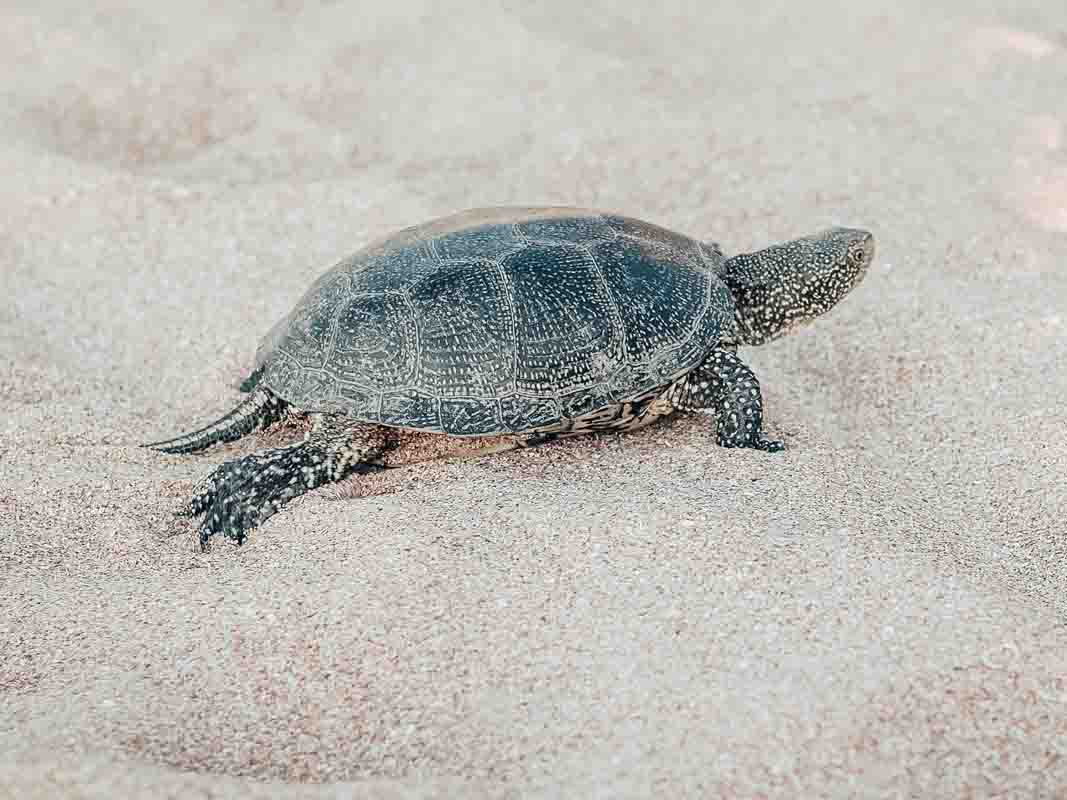
iSimangaliso Wetland Park | Image by Chantelle Flores | www.51countriesandcounting.com
Year after year you can find these incredible creatures, weighing up to 450 kilograms and two metres in length, digging 1-metre deep holes into the ground to lay their eggs. On average, each lays over 100 eggs along these pristine beaches, before carefully concealing its nest from predators.
Kosi Bay
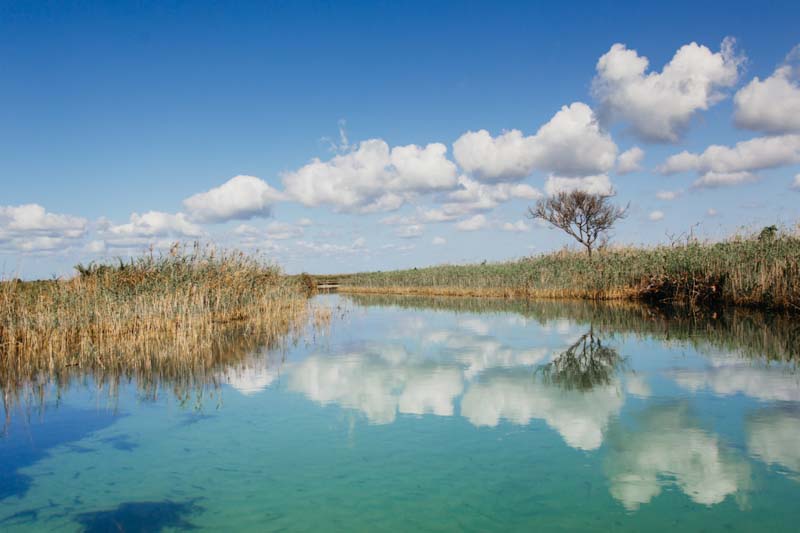
iSimangaliso Wetland Park | Image by Chantelle Flores | www.51countriesandcounting.com
As mentioned above, South Africa is home to some of the highest forested sand dunes in the world. You can find these in Kosi Bay, one of the last unspoiled paradises on the African continent. It falls just off the border of Mozambique in the northernmost part of iSimangaliso Wetland Park.
Its 110 square kilometres consists of an estuary, surrounded by forested sand dunes, lakes and white sand beaches.
What makes this area even more special is that it is one of the few places in the world where you can see the raffia palm tree. This plant reaches 16 metres in height and has the longest leaves of the whole plant world.
Traditional fishing kraals
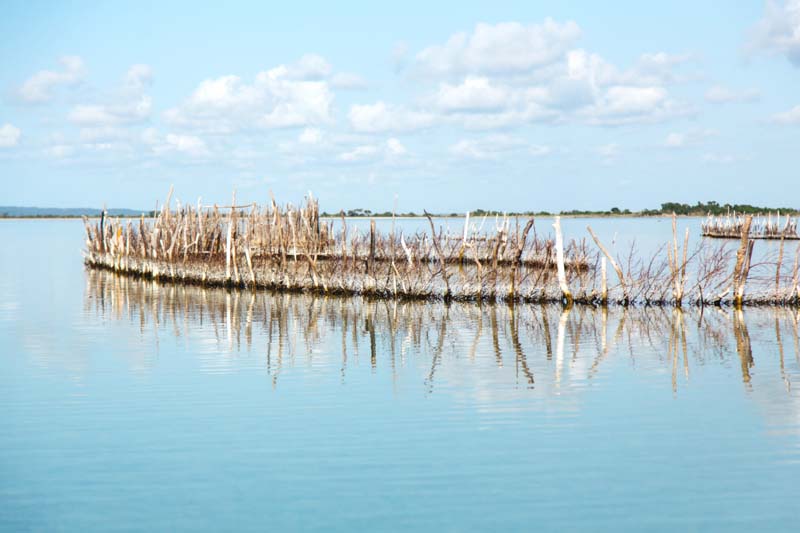
iSimangaliso Wetland Park | Image by Chantelle Flores | www.51countriesandcounting.com
One of the best things to do in Isimangaliso Wetland Park is to visit the region’s 700-year-old fishing kraals. In the Kosi Bay estuary, lie ancient fishing traps that once served as a sustainable fishing method – a technique that has long been passed down generations by the Thonga population.
Scuba diving in Sodwana and Cape Vidal

iSimangaliso Wetland Park | Image by Chantelle Flores | www.51countriesandcounting.com
Some of the most spectacular coral diversity in the world can be found along the South African coastline, specifically in Sodwana Bay and Cape Vidal.
Diving this stretch of coast is one of the best things that you can do in iSimangaliso Wetland Park. There’s a vast array of brightly coloured and unspoiled coral reefs, as well as a huge diversity of Indo-Pacific fish species and invertebrates.
Marine life
1,200 Species of fish grace these waters, as well as over 95 identified species of hard and soft corals and sponges. Expect to see colour-changing octopi and squid in these waters, eagerly waiting to ambush unsuspecting prey. During the months of November through to April, you can dive alongside gigantic whale sharks who grace these waters during this time.
At other times of the year, you can experience both the southern right whale and humpback whale that migrate to this part of the coast. Pregnant, ragged-tooth sharks are common here as well, especially during the summer months.
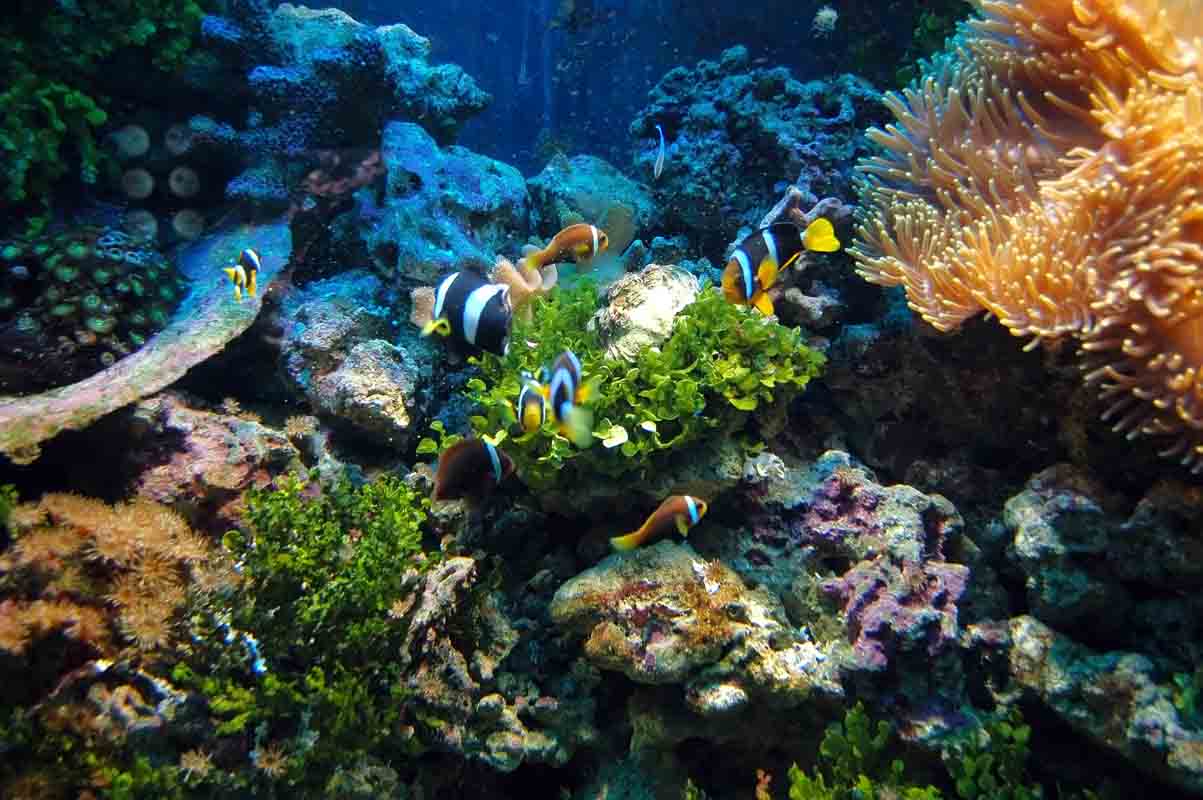
iSimangaliso Wetland Park | Image by Chantelle Flores | www.51countriesandcounting.com
The reefs are estimated to be about 4,000 years old and perched on a sandstone base. As a result, they tend to be flat with low pinnacles and have shallow drop-offs.
Drift diving is common here, as a predominant current flows from north to south. But despite this, the overall water conditions are ideal. The water clarity is exceptional and allows for diving all year round, owing to the warmth of the water.
Dive sites not to miss
With an abundance of dive sites along the coast, choosing one that will suit you best will be a hard choice. We have made it easier for you by including this list of popular spots. Most of these sites are fairly shallow and can be appreciated by beginner divers.
1. The Miles
The most commonly divided reefs at Sodwana are the 2 Mile, 5 Mile, 7 Mile and 9 Mile reefs. Whilst each of these offers unique features, they all share one thing in common – incredible coral formations and an abundance of fish, making for a very dynamic and colourful dive.
2. Rocktail Bay
Diving Rocktail Bay is arguably one of the best dives you can do at iSimangaliso Wetland Park.
The reefs are remote and unspoiled, so much so that you won’t find many other boats and dives in this region. Instead, you will have a blissful abundance of opportunities to explore a pristine underworld that is teeming with fish.
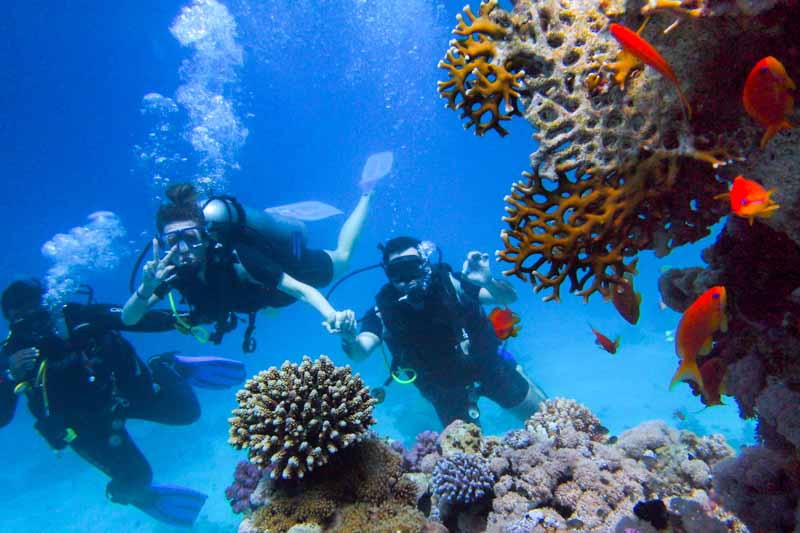
iSimangaliso Wetland Park | Image Credit: Pexels
3. Shipwrecks
Just off the coast of Cape Vidal, are two recently sunken barges. Artificial reefs have since grown around them and are now home to 329 species of fish. Scientific research divers particularly love this location and have recently discovered a new kind of fish completely new to science – the yellowtail blenny.
Kayak tours
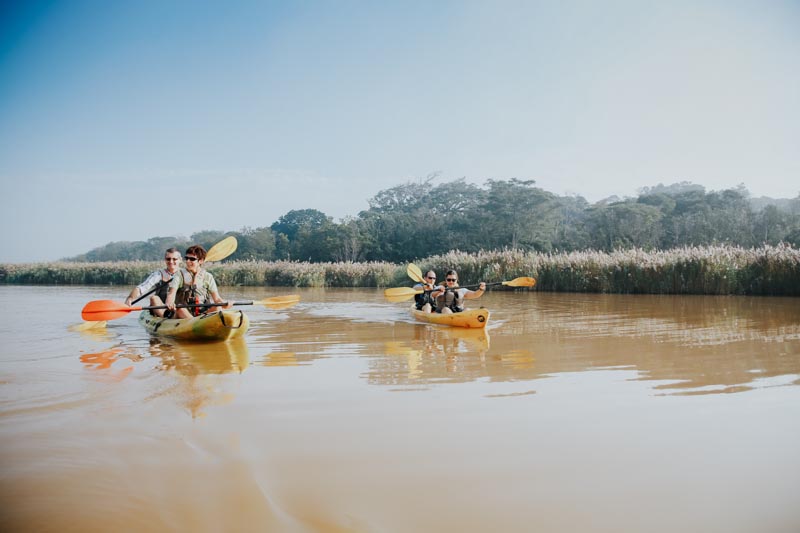
iSimangaliso Wetland Park | Image by Chantelle Flores | www.51countriesandcounting.com
For the enthusiastic adventurer, opt for a guided kayak tour along the hippo and crocodile-infested waters. While it is not for the faint-hearted, it is one of the best experiences to have at iSimangaliso Wetland Park.
Most of the tours depart early in the mornings from the St Lucia estuary mouth and last for three hours. You will pass by Honeymoon Bend and the quiet backwaters of the estuary where you will be able to spot crocodiles basking in the sun and hippos resting in the waters.
Best time to visit
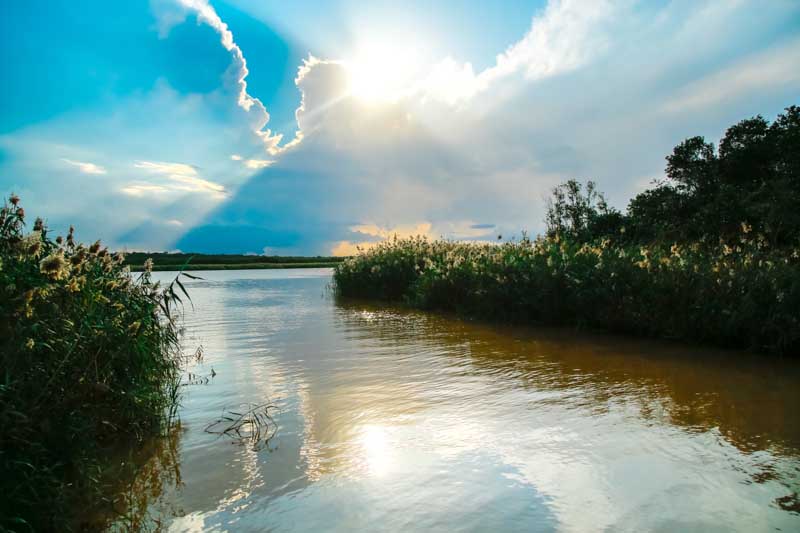
iSimangalisoWetland Park | Image by Chantelle Flores | www.51countriesandcounting.com
The iSimangaliso Wetland Park boasts subtropical weather all year round with temperatures averaging around 20 degrees Celcius. If you prefer warmer weather, visit during the months of February and March.
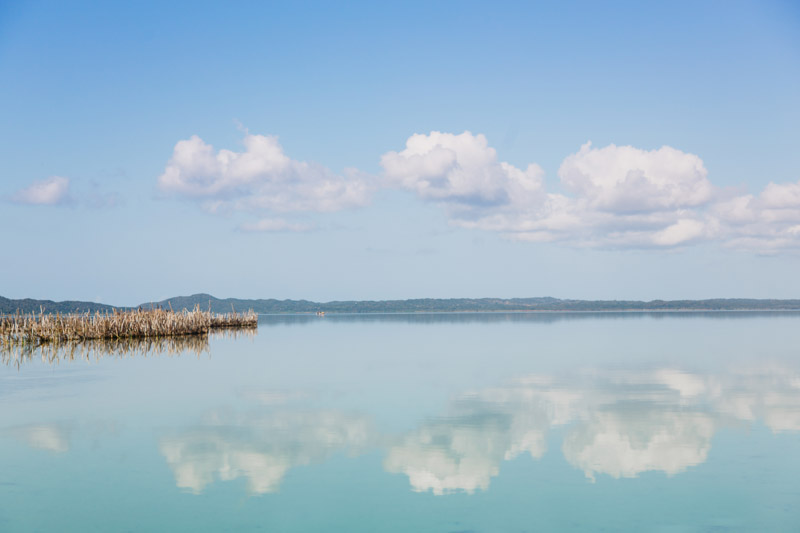
iSimangaliso Wetland Park | Image by Chantelle Flores | www.51countriesandcounting.com
Have you visited iSimangaliso Wetland Park before? If so, share your experience in the comments below.
Also read:
Spoil yourself on a Buddhist retreat in KZN
Amazing activities to do along the South Coast
Don’t forget to sign up to our newsletter to stay on top of flight deals, travel tips and so much more.
All information on this blog page was correct at the time of publishing and may change at any time without prior notice. Travelstart will not be held liable for loss or inconvenience resulting from the use of out-dated or incorrectly noted information.